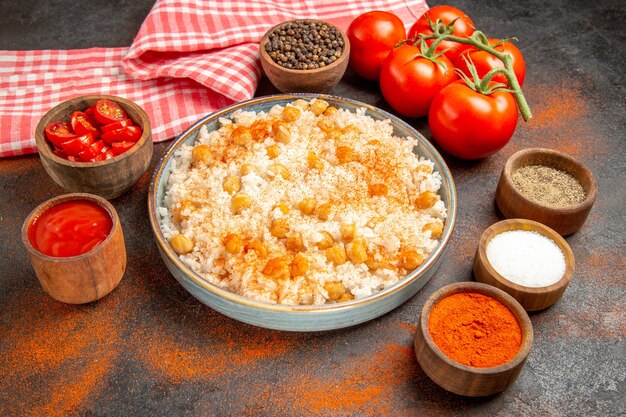India Moves To Secure Tomato Supplies
A report issued earlier today by LiveMint noted that Bloomberg, the reputed financial, software, data, and media company, was informed by certain individuals that India was considering restricting 80% of rice exports.

It is important to note that the paper was unable to verify this story at the time of writing.
The story comes on the heels of a rise in food inflation owing to delayed monsoons, reports of extreme heat, insufficient production outcomes, pest attacks, falling acreage, and other instances of supply disruptions.
In yesterday’s CPI data published by the Ministry of Statistics and Program Implementation, Government of India, food inflation rebounded to 4.6% YoY for June 2023, as against 3.3% in May 2023, which was at an 18-month low.
Food prices rose sharply higher by 2.2% on a month-on-month basis.
Food inflation is an especially important component of India’s CPI index because it accounts for over 54% of the basket, which is considerably higher than in most advanced economies.
Although inflation remains well within the Reserve Bank of India’s 4% (+/-) 2% tolerance band, yesterday’s headline number exceeded market expectations, while also reversing four consecutive months of declining consumer inflation.
With the possibility of unpredictable weather patterns ahead, as well as the surge in the prices of cereals (13% YoY) and pulses (11% YoY), officials are likely to be concerned about the susceptibility of the broader population to elevated levels of food inflation.
If the government is considering this move, it would targeted towards keeping rice prices manageable for consumers.
Global factors
India is currently the largest rice exporter in the world, accounting for roughly 40% of global market share.
The graph below shows the volumes sold by leading exporters as of 2022/23.

Source: Statista
Unfortunately, according to the FAO’s June All Rice Price Index, global rice prices are already severely elevated.

Source: FAO All Rice Price Index (2014-2016 = 100)
This is in part because of the heavy appetite of leading importers such as China and the Philippines, where governments have continued to stock rice grains at an accelerated this year.
Secondly, concerns regarding the risk to global rice production due to emerging unfavourable El Niño weather conditions continue to persist.
The graph below shows the volumes purchased by leading importers as of 2022/23.

Source: Statista (2022/23)
Prices of other staple foods in the international market have also been elevated since the outbreak of the Ukraine-Russia war.
Economists at CareEdge Ratings also note,
Looking ahead, the sale of wheat and rice from the government’s buffer stock via Open Market Sale Scheme (OMSS) auctions could help cool retail prices of rice, wheat and atta (wheat flour).
Tomato policy
Given concerns that tomato prices could accelerate even further (having risen 64% on a sequential basis in yesterday’s CPI report), the central government has taken steps to curb the threat of higher food inflation.
Officials have directed major cooperatives such as the National Agricultural Cooperative Marketing Federation (NAFED) and National Cooperative Consumers Federation (NCCF) to buy tomatoes from surplus, high-producing states such as Andhra Pradesh and Karnataka to enable national-level redistribution in areas facing severe shortages.
At present, cities are being prioritized depending on the absolute increase in retail prices during the past month.
This is only applicable for locations where the cost has headed above all-India averaged cost, which reportedly stood at ₹104.38 per kilogram ($1.27 as per the current exchange rate) on Monday according to the central government.
In some locations, prices were as high as ₹200 per kilogram ($2.44 as per the current exchange rate).
Policymakers hope that prices will likely cool in August after the harvesting of fresh tomato crops in Maharashtra and Madhya Pradesh.
Additional remarks
According to a UN report from April 2023, India is now the most populous country in the world.
With one-sixth of the global population resident in the country, officials have needed to take certain measures to ensure food accessibility for consumers and the maintenance of broader purchasing power.
Whether the government will take further actions to prop up domestic rice stocks is yet to be seen.
More By This Author:
Microsoft-Activision Deal Takes A Big Step Towards CompletionEUR/GBP Analysis As A Double Bottom Pattern Slowly Forms
Nvidia Stock Price Forecast: Goldman Sachs Sees Potential For Another 20% Rally



